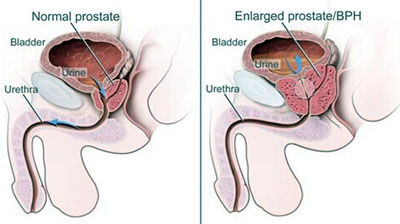
TCM Perspective On
Benign prostatic hypertrophy (BPH)
Benign prostatic hyperplasia (BPH) is a common problem of aging for men. It has been proposed that the disorder has two phases, one that involves no clinical signs and the other that manifests as disorders of urination resulting from urinary tract obstruction by an enlarged prostate. In the first phase, there are microscopic changes within the prostate that may occur as early as the fourth decade of life and these may then be followed by macroscopic changes, namely enlargement of the prostate that typically begins during the fifth or sixth decade of life.
However, clinical signs of the disorder occur only if the enlargement is substantial and becomes complicated by other disorders, such as prostatitis, or if the gland becomes hardened or deformed. The progression to clinical disease is most often seen after age 60. It is further suggested that while nearly all men will experience the microscopic changes in the prostate if they live long enough, only about half will experience prostate enlargement, and, of those, only about half will develop clinical symptoms.